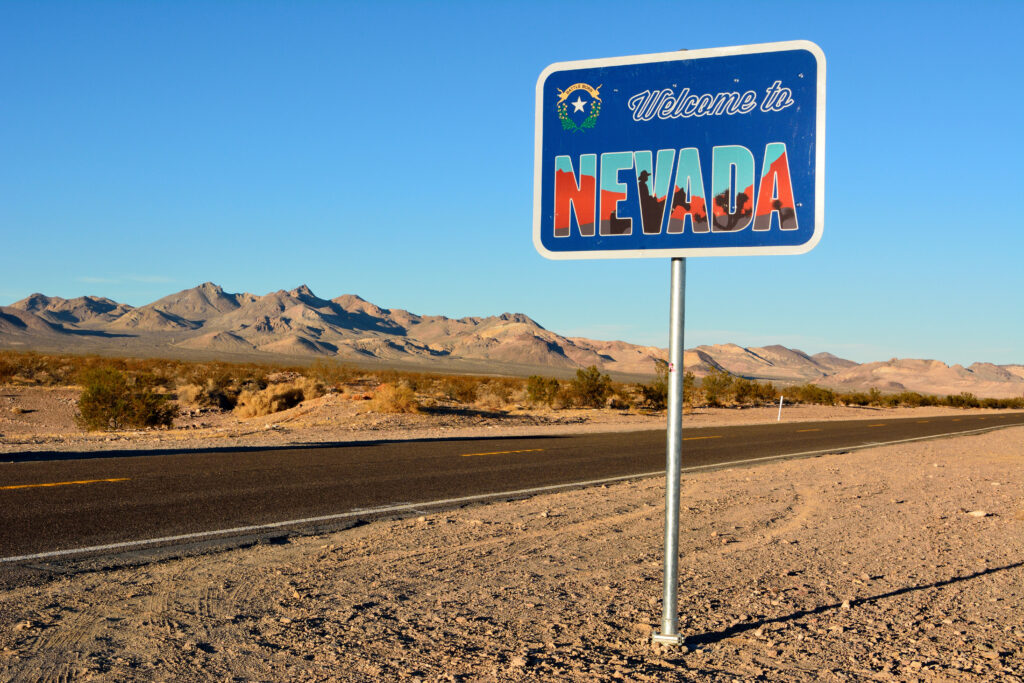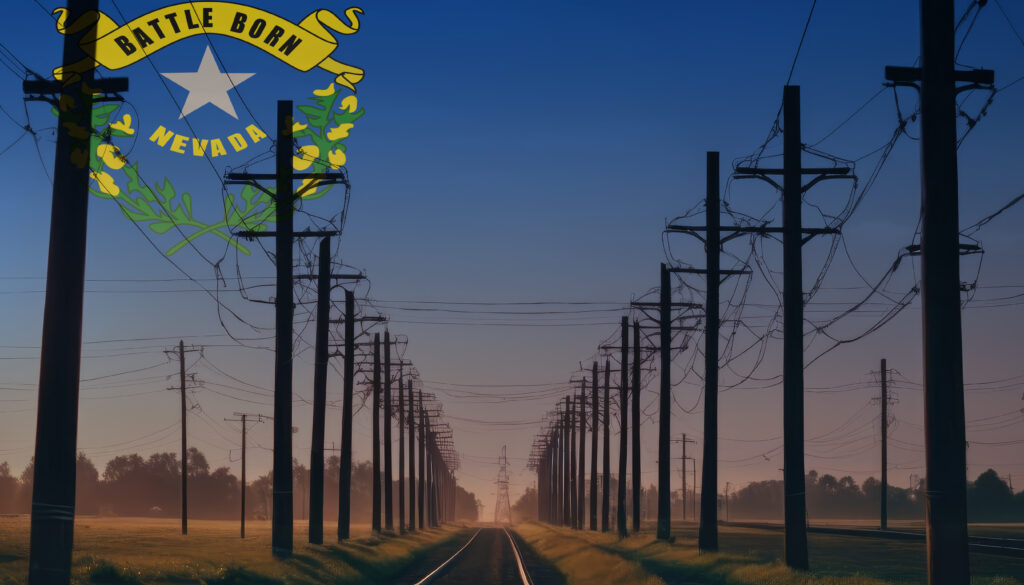Top Texas E-Bike Laws: What You Need to Know for Safer Riding

Understanding Texas e-bike laws is crucial for staying safer and legal on the road. This guide breaks down the different e-bike classes, key riding regulations, and local rules to ensure you’re fully informed. Key Takeaways Texas law classifies e-bikes into three categories: Class 1 (pedal-assist up to 20 mph), Class 2 (throttle-assisted up to 20 mph), and Class 3 (pedal-assist up to 28 mph, with age restrictions). E-bike riders must adhere to traffic laws similar to traditional bicycles, including local regulations, helmet laws for those under 18, and speed limits based on the path or lane. E-bikes offer significant environmental, health, and economic benefits, including lower emissions, improved fitness, and reduced commuting costs, contributing to their increasing popularity and evolving legislation in Texas. Understanding E-Bike Classes in Texas Texas law defines electric bicycles into three distinct categories based on their speed and motor assistance. Knowing these classes helps you comply with Texas electric bike laws and promotes a safer riding experience. Each class has specific attributes that determine where and how you can ride these e-bikes. Class 1 e-bikes provide pedal-assist up to 20 miles per hour, while Class 2 e-bikes, on the other hand, come equipped with a throttle that allows them to reach speeds of up to 20 miles per hour without pedaling. Lastly, Class 3 e-bikes offer pedal-assist up to 28 miles per hour but require riders to be at least 16 years old, showcasing the benefits of assisted speed. This classification system regulates e-bike use, ensuring compliance with the Texas transportation code without requiring a license, registration, or insurance. Class 1 E-Bikes Class 1 e-bikes are a popular choice among e-bike riders due to their simplicity and ease of use. These electric bicycles provide pedal-assist up to 20 miles per hour and are equipped with fully operable pedals, making them ideal for riding on bike lanes and bike paths. Class 1 e-bikes have no age restrictions in Texas, making them accessible to everyone from young teens to older adults. Combining the benefits of an electric motor with the feel of a regular bike, they are versatile for various riding conditions, including non-motorized trails and motorized vehicle zones where allowed. Class 2 E-Bikes Class 2 e-bikes stand out for their throttle feature, allowing riders to reach speeds of up to 20 miles per hour without the need to pedal. This feature is convenient for those who want a break from pedaling or prefer a more relaxed ride. They also have fully operable pedals, allowing riders to use pedal assist if desired. Similar to Class 1, Class 2 e-bikes have no age restrictions in Texas, making them accessible to a wide range of riders. Class 3 E-Bikes Class 3 e-bikes offer a more robust riding experience with their ability to provide pedal-assist up to 28 miles per hour. However, Texas regulations require riders to be at least 16 years old due to the higher speeds of Class 3 e-bikes. These electric bikes are ideal for those looking for a faster commute or a more vigorous workout, but it’s important to remember that they come with additional responsibilities and restrictions compared to Class 1 and Class 2 e-bikes. Key Regulations for Riding E-Bikes in Texas Riding e-bikes in Texas comes with a set of regulations that ensure the safety of both the rider and the public. According to the Texas transportation code, e-bikes are classified as bicycles, which means they must adhere to the same traffic laws as traditional bicycles. This means following local traffic rules, which can vary depending on the area. Additionally, e-bike riders must be aware of DUI laws, as these apply to e-bike riders on public roads just as they do to car drivers. Modifying an e-bike to exceed its legal speed limits can lead to it being reclassified as a motor vehicle, which would require licensing, registration, and insurance. Understanding and complying with the specific regulations for each e-bike class helps avoid legal issues. Always check local authority guidelines, as additional rules may apply in different areas. Helmet Laws Helmet laws in Texas are especially important for younger e-bike riders. It is mandatory for anyone under the age of 18 to wear a helmet while riding an e-bike. This requirement is even more stringent for Class 3 e-bikes, where riders must wear a helmet if they are under 18 and meet the minimum age requirement of 16 to operate the bike. Although helmets are not mandatory for riders over 18, they are highly recommended for safety. Speed Limits Adhering to speed limits is essential for safer and legal e-bike riding. Class 2 e-bikes, for example, must have their motor shut off at 20 miles per hour. All e-bikes should adhere to the speed limits established for the paths they use. If riding on a path or lane with a lower speed limit, you must comply regardless of your e-bike’s capabilities. Following speed limits ensures the safety of all trail and road users. Bike Lanes and Paths E-bikes are generally allowed on bike lanes, multi-use paths, and roads with speed limits up to 35 mph. On shared paths, e-bike riders should reduce speed around pedestrians and announce their presence when overtaking. Yielding to pedestrians and respecting other users’ space maintains safety and harmony on shared trails. Keeping noise levels down is courteous and preserves the natural experience for all trail users. Local Authority Regulations Local authorities in Texas have the power to enforce additional regulations on e-bike usage. While cities cannot restrict e-bikes in places where bicycles are allowed, they can implement specific rules that may vary from state laws. This flexibility allows municipalities to address the unique needs and concerns of their communities, ensuring that e-bike use is safer and harmonious with other forms of transportation. Knowing local regulations is important for e-bike riders, as rules can vary significantly from city to city. Check local ordinances and rules for the areas you plan to ride to avoid legal issues and ensure compliance. City-Specific
Essential Guide to Uninsured Motorist Coverage for Cyclists

Uninsured motorist coverage offers added protection for cyclists against financial risks from drivers lacking sufficient insurance. On the road, cyclists face vulnerability, and accidents with uninsured or underinsured drivers can cause significant financial strain. It mitigates these risks by covering medical expenses, lost wages, and property damage.
There are two main types of uninsured motorist coverage that cyclists should be aware of: bodily injury and property damage coverage. Uninsured Motorist Bodily Injury (UMBI) coverage helps with medical expenses if a cyclist is injured by an uninsured driver, ensuring necessary medical attention without the full financial burden.
Property damage coverage aids in repairing or replacing a damaged bicycle, protecting the cyclist’s financial well-being.
Adding uninsured motorist coverage to an existing car insurance policy ensures cyclists have vital protection. This addition offers peace of mind, knowing they won’t face financial repercussions alone if an accident with an uninsured driver occurs. Additionally, it can extend to cover lost wages and other associated costs resulting from accidents.
Cycling Accidents in 2024: Key Trends and Safety Tips

Cycling accidents have been a growing concern, with approximately 850 reported bicyclist fatalities occurring annually in the U.S. This represents a significant increase, with bicyclist deaths rising by 42.7% since 2010. The trend has shown no signs of slowing down, highlighting the urgent need for improved bicycle safety measures, especially as bicyclist deaths occurred. Additionally, the total traffic fatalities provide a broader context, showing the overall severity of road safety issues and the need for comprehensive safety strategies.
Rising Toll: Bikers Killed Every Year and How to Improve Safety

In 2022, 1,105 bikers were killed every year while bicycling. This article looks at the statistics, major causes, and ways to improve biker safety, particularly in light of the alarming number of bikers killed every year. Key Takeaways Bicyclist fatalities reached a record high of 1,105 in 2022, highlighting a troubling upward trend since 2010. Motor vehicle collisions, particularly with light trucks, are the leading cause of cyclist deaths, with urban areas accounting for 83% of fatalities. Implementing safety measures such as improved infrastructure, helmet usage, and community engagement are crucial to reducing cyclist fatalities and enhancing overall safety. The increase in people bicycling for commuting and recreation has highlighted the need for improved safety measures. Annual Statistics of Bikers Killed by Fatal Injuries The numbers paint a sobering picture. In 2022, 1,105 bicyclists lost their lives in motor vehicle accidents, the highest recorded fatalities ever. This figure is part of a troubling trend. Bicyclist fatalities have shown a steady increase since 2010, peaking at 966 in 2021. The previous high before 2022 was 1,003, underscoring a consistent upward trajectory. These statistics are more than just numbers; they represent lives cut short and families devastated. In 2021 alone, bicyclists were involved in 2.2% of all traffic fatalities, a stark reminder of the vulnerability of those on two wheels. The average age of cyclists killed in these accidents was 49 years, indicating that this is not just an issue affecting young or inexperienced riders. According to data from the U.S. Census Bureau, the percentage of U.S. workers who travel to work by bicycle has shown fluctuations over the years, indicating changing trends in bicycling habits. The available data from the past decade calls for action. With increased urbanization and more people riding bicycles, the need for improved safety measures is pressing. The rise in fatalities highlights the urgent requirement for comprehensive strategies to protect cyclists. Common Causes of Fatal Bicycle Accidents Understanding the common causes of fatal bicycle accidents is crucial for developing effective prevention strategies. Collisions with motor vehicles often result in severe injuries or fatalities, frequently due to driver distraction, improper lane changes, or failure to yield. Cyclists face heightened risks in urban areas, where traffic density and congestion increase the likelihood of accidents. Additionally, helmet usage plays a crucial role in preventing fatal injuries. Each of these factors uniquely contributes to the overall risk profile for cyclists. Motor Vehicle Collisions Motor vehicle collisions are the leading cause of cyclist fatalities, with light trucks being particularly dangerous. In 2021, light trucks were responsible for 46% of bicyclist deaths. The sheer size and weight disparity between bicycles and motor vehicles put cyclists at a significant disadvantage, often leading to severe injuries or fatalities in the event of a crash. The statistics underline the need for improved safety measures to protect a cyclist injured from motor vehicle collisions. Driver distraction, fatigue, and improper lane changes commonly contribute to these tragic incidents. It’s clear that addressing these issues requires a multifaceted approach, including better driver education and stricter enforcement of traffic laws. Urban Area Risks Urban areas pose significant risks for cyclists, with a staggering 83% of cyclist fatalities occurring in these environments. The higher volume of traffic and congestion in cities contributes to increased rates of fatal bicycle injuries. In 2021, urban areas saw around 85% of bicyclist fatalities, up from 69% in 2011, highlighting a growing problem. The high traffic density and frequent interactions between vehicles and cyclists in urban settings create a dangerous environment. Enhancing urban infrastructure and reducing traffic congestion can significantly improve cyclist safety. Helmet Usage Helmet usage is crucial in preventing fatal injuries in bicycle accidents. Wearing a helmet can reduce the risk of severe head injuries by up to 73%. Despite this, data shows that 62% of bicyclists killed in 2022 were not wearing helmets, underscoring the importance of this simple yet effective measure. Helmets provide essential head protection, significantly decreasing the severity of injuries in a crash. Encouraging more cyclists to wear helmets could dramatically reduce fatalities and serious injuries. Risk Factors for Cyclists Several risk factors contribute to the high rate of cyclist fatalities. Most fatal crashes occur during dawn, dusk, or nighttime, accounting for 56% of all cases. Poor visibility during these times increases the risk. Additionally, adverse weather conditions can impair a cyclist’s control and decrease visibility, making it crucial to adapt speed and use reflective gear. Implementing safety measures like proper bike maintenance and wearing protective gear can significantly lower the chances of accidents and fatalities. Enhancing street lighting and ensuring cyclists are visible to drivers are crucial steps in reducing these risks. Impact of Speed Limits on Bicycle Safety Speed limits play a crucial role in bicycle safety. Reducing average vehicle speeds can lead to significantly fewer bicycle accidents and less severe injuries. A motor vehicle traveling at 25 mph poses a lower risk of serious injury to cyclists compared to one at 40 mph. Effective speed management strategies, such as lowering slower speed limits and implementing automated speed enforcement, can enhance safety for cyclists. The design of public roadways can also be modified to naturally calm traffic, further enhancing safety for cyclists. Reducing speed limits in busy areas can create safer environments that encourage more cycling and walking. Legal Aspects and Compensation for Families Families of cyclists killed in accidents have legal options to seek compensation. A wrongful death claim can cover funeral costs and the loss of financial support from the deceased. Compensation in bicycle accident lawsuits can also include medical expenses, lost income, pain and suffering, and property damages. Consulting a personal injury attorney can help victims and their families navigate the legal process and secure fair compensation. The clarity of fault in an accident significantly influences the potential settlement amount. Safety Measures to Reduce Fatalities Implementing safety measures is crucial to reducing cyclist fatalities. Adverse weather and lack of adequate safety equipment significantly raise the injury risk for cyclists in crashes. The following subsections
Top 10 Rules of the Road for Cycling Safety Tips

Looking to cycle safely on the road? This article provides the 10 rules of the road for road cycling that you need to know. Follow these key guidelines to ensure a safer and enjoyable ride. Key Takeaways Wearing a helmet is essential for preventing serious head injuries and is legally required in many states. Cyclists must use hand signals to communicate their intentions and obey traffic laws to ensure safety on the road. Staying visible with bright clothing, reflective gear, and lights, as well as using dedicated bike lanes, significantly enhances road cycling safety. Always Wear a Helmet Wearing a helmet is crucial for preventing head injuries during a bike ride. Statistics show helmets can reduce serious head injuries by up to 60%, making them an essential part of your cycling gear. Imagine the peace of mind knowing your helmet could be the difference between a minor fall and a life-threatening injury. Many states require bicyclists to wear helmets by law, underscoring the responsibility to protect yourself. This legal requirement ensures every cyclist is taking necessary precautions. Not wearing a helmet can also lead to fines, adding a financial incentive to stay safer. Wearing a helmet is simply a smart decision. Accidents can happen to even the most experienced cyclists, and the head is one of the most vulnerable parts of the body. Donning a helmet is a proactive step in ensuring your safety and that of your fellow cyclists. Use Hand Signals Communication is key to road safety, and hand signals are vital. Using hand signals allows you to convey your intentions to drivers and other cyclists, reducing the risk of collisions. For instance, to indicate a left turn, extend your left arm straight out. This simple gesture alerts motorists to your movements, helping them anticipate and react during lane changes. For a right turn, you have two options: extend your right arm straight out or bend your left arm upward at a right angle. To signal that you are slowing down or stopping, extend your left arm downward with your hand open. These signals are part of the rules of the road and are crucial for avoiding misunderstandings and accidents. Obey Traffic Signs and Signals Cyclists share the same rights and responsibilities as motorists, which means adhering to all traffic laws. This includes stopping at stop signs, obeying traffic signals, and yielding the right of way when necessary. Non-compliance with traffic laws can lead to legal consequences such as fines and citations. More importantly, it significantly increases the risk of accidents. Each year, many cyclists are involved in collisions because they fail to observe these rules. Following traffic regulations helps maintain a predictable flow of traffic, enhancing safety for all road users. Riding predictably is crucial. When drivers can anticipate your actions, the likelihood of accidents decreases. This includes using hand signals, looking over your shoulder when changing lanes, and making your intentions clear to other road users. These practices keep you safer and foster a cooperative road environment. Ride in the Same Direction as Traffic Riding in the same direction as traffic is fundamental for cyclists. It reduces the risk of collisions and makes your movements more predictable to motorists. Riding against the flow of traffic confuses drivers and increases the chances of accidents. Predictability helps motorists anticipate your actions, making the road safer for everyone. This approach prevents accidents and ensures you are visible and expected on the road. Riding in the same direction is not just about safety; it’s also about legal responsibility. Cyclists must follow the same traffic laws as motorists, including riding with the flow of traffic in a straight line. This practice aligns with broader principles of road safety and legal compliance. Stay Visible with Bright Clothing and Lights Visibility is crucial for bicycle safety. Wearing bright clothing, reflective gear, and using lights can significantly improve your visibility to drivers. Bright colors and reflective materials on your clothing can catch the attention of motorists, especially in low-light conditions. At night, using lights is essential. A red rear light and a front light can make a huge difference in how well drivers see you. These lights help you see the road ahead and ensure you are seen by others. In addition to lights and bright clothing, riding in the same direction as traffic increases your visibility. Following the rules of the road makes it easier for drivers to spot you and anticipate your actions, making the road safer for everyone. Use Dedicated Bike Lanes When Available Dedicated bike lanes enhance cyclist safety by providing a separate bike lane from motor vehicles. These lanes reduce the risk of injury and improve the overall flow of traffic. Using bike lanes contributes to better traffic management by giving cyclists a clear area to ride, minimizing conflicts with motor vehicles. This separation makes it easier for both cyclists and drivers to navigate the roads safely. The presence of bike lanes can encourage more investment in cycling infrastructure, promoting a safer and more bike-friendly environment. Using these lanes, cyclists not only protect themselves but also advocate for better cycling conditions in their communities. Avoid Riding on Sidewalks Riding on sidewalks can be dangerous for both cyclists and pedestrians. Cyclists can crash into pedestrians, lose control on uneven surfaces, and surprise drivers who are not expecting them. Drivers often do not expect cyclists on sidewalks, increasing the risk of accidents when crossing streets or driveways. By avoiding sidewalks and using bike lanes instead, cyclists can ensure a safer environment for everyone. Be Cautious Around Parked Cars One common hazard for cyclists is “dooring,” where a parked car door opens unexpectedly into the cyclist’s path. To prevent such incidents, maintain a distance of at least 4 feet from parked cars. Cyclists should also slow down when approaching parked cars to increase their reaction time and account for blind spots. This extra caution helps avoid sudden accidents and ensures a smoother ride. Vigilance is key. Always watch for drivers who
Top Tips for Cycling in the Rain: Stay Safer and Enjoy the Ride

Cycling in the rain can be challenging, but with the right preparation, it can also be enjoyable. In this article, we’ll provide you with essential tips and gear recommendations to stay safe, dry, and comfortable during wet weather rides.
Maricopa County Bike Laws for Cyclists

Are you confused about the bike laws in Maricopa County? This guide provides clear information on the requirements for cyclists, including helmet usage, bike lane rules, night riding regulations, and required safety gear, all of which are part of the Maricopa County bike laws. Stay compliant and safer by understanding these local laws. Key Takeaways Cyclists in Maricopa County must follow the same traffic laws as motor vehicles and are required to use designated bike lanes when available. Helmet use is mandatory for riders under 18, and while adults aren’t legally required to wear helmets, it’s strongly recommended for safety. Night riding requires bikes to have functional lights and reflectors, and cyclists should maintain a safer distance from motor vehicles to avoid accidents. Understanding Maricopa County Bike Laws Maricopa County has established specific bike laws to enhance cyclist safety and regulate bicycle operation within the area. Cyclists here must adhere to the same traffic laws as motor vehicle drivers, ensuring a predictable and safer environment for everyone on the road. The trail consists of various features such as elevation changes and diverse terrain, offering both physical challenges and scenic views. Educational programs often include training on safer riding practices and local cycling laws, helping cyclists stay informed and compliant. These laws are not just about rules; they are about creating a harmonious and safer cycling community. Helmet Requirements In Maricopa County, wearing a helmet is mandatory for riders under the age of eighteen. This law aims to protect young cyclists from serious head injuries, which are significantly reduced by helmet use. Although adult bikers are not legally required to wear helmets, it’s highly recommended for all ages to enhance safety while riding. Bike Lane Usage Cyclists in Maricopa County are required to use designated bike lanes where available. These trail passes through various areas and landscapes, offering scenic views, residential areas, and access to parks. However, they can leave these lanes when necessary, such as to navigate intersections safely or avoid obstacles. Adhering to bike lane rules ensures a smoother ride and reduces the risk of accidents. Night Riding Regulations Night riding in Maricopa County requires cyclists to equip their bikes with lights and reflectors to enhance visibility. Front and rear lights are encouraged to ensure that cyclists are seen by other road users. A working brake system is also necessary for safety during nighttime rides. Safety Gear and Equipment Protective gear is a necessity for compliance with bike laws in Maricopa County. Cyclists are required to use specific safety gear to ensure their own safety and the safety of others. Visible clothing and bike lights are crucial during low visibility conditions, ensuring cyclists are easily seen by drivers and other road users. Required Bike Features Arizona law mandates that bicycles must be equipped with functional brakes to ensure safer stopping. Additionally, a bell or horn is required to alert pedestrians and other cyclists of your presence. These features are essential for complying with local regulations and ensuring a safer riding experience. Recommended Safety Gear While not all safety gear is legally required, items like helmets, biking gloves, and mirrors are highly recommended. Helmets provide critical head protection, while gloves enhance grip and comfort during rides. Mirrors help cyclists stay aware of their surroundings, and padded shorts can make longer rides more comfortable by reducing chafing. Rules of the Road for Cyclists Just like motor vehicle drivers, cyclists must follow traffic rules to ensure safety on the road. This includes obeying stop signs, traffic lights, and other signals. Riding predictably and being aware of your surroundings are key practices to enhance safety when sharing the road with cars. Always remember that cyclists are more vulnerable in collisions, so extra caution is necessary. Traffic Signals and Signs Failing to stop at stop signs and running red lights are common infractions among cyclists. To ensure safety, cyclists must adhere to traffic signals and signs just like any other road user. Proper lighting at night is also crucial to avoid violations and accidents. Right-of-Way Establishing eye contact with drivers is a simple yet effective way to confirm visibility and ensure mutual understanding at intersections. This practice helps prevent accidents and ensures that both cyclists and drivers are aware of each other’s presence. Following right-of-way rules is essential for safety and predictability in traffic situations. Passing and Being Passed When passing other vehicles, cyclists should always signal their intentions and maintain a safer distance. Similarly, when being passed by motor vehicles, cyclists should ride in a straight line and stay aware of their surroundings to avoid sudden movements. These practices greatly reduce the risk of accidents on the road. Interacting with Motor Vehicles Interacting safely with motor vehicles requires cyclists to yield to pedestrians in crosswalks and follow specific right-of-way rules. Unfortunately, motorists often lack awareness of the laws regarding cyclists, leading to misunderstandings about shared roadway rights. Educating both drivers and cyclists on these laws is crucial for safer interactions on the road. Safer Distances Maintaining safer distances from motor vehicles is crucial for preventing accidents. Cyclists are advised to keep at least three feet away from moving vehicles and four feet from parked cars to avoid being caught by suddenly opened doors. On narrow roads, ride as far to the right as safely possible while maintaining this minimum distance. Communicating Intentions Using hand signals is essential for cyclists to indicate turns and stops to drivers. This practice helps drivers anticipate cyclists’ movements and avoid collisions. When overtaking other cyclists, make sure there is adequate space and signal your intentions clearly. Urban Trails and Bike Paths Maricopa County is blessed with numerous urban trails and bike paths that cater to cyclists of all skill levels. Bicycle programs in Arizona play a crucial role in promoting safer cycling and enhancing local infrastructure. SARA Park offers a variety of recreational activities, with stunning scenery and vistas of the city’s namesake lake, making it a popular spot for mountain biking. These resources, including bike maps
Regional Bicycle and Pedestrian Plan: A Road Cyclist’s Comprehensive Guide to Southern Nevada

Southern Nevada is rapidly transforming into a haven for cyclists, thanks to the Regional Transportation Commission of Southern Nevada’s (RTC) 2017 Regional Bicycle and Pedestrian Plan (RBPP). This ambitious initiative strives to create a comprehensive network of safer, convenient, and accessible cycling routes across urban and suburban areas, catering to cyclists of all ages and abilities. Whether you’re a casual rider or a dedicated road cyclist, the infrastructure upgrades laid out by the RTC will dramatically enhance the cycling experience throughout Southern Nevada. In this comprehensive guide, we’ll explore the details of the RBPP, covering current cycling infrastructure, plans for future expansion, and the benefits these developments will bring to road cyclists. We’ll also discuss the safety challenges cyclists still face and why cyclists involved in accidents should seek the expertise of Lawyers 4 Cyclists, a dedicated legal team specializing in bike-related incidents in Nevada. Vision for Cycling in Southern Nevada At the heart of the RBPP is a vision for a connected, safer, and convenient cycling system that enhances both recreational and transportation opportunities for all users. The plan supports broader goals for economic development, health improvements, environmental sustainability, and equitable access to transportation. This vision is aligned with the Southern Nevada Strong initiative, a regional strategy focused on sustainable growth and long-term economic success. Key goals of the RBPP include: Safety and Comfort: Creating a network of high-comfort facilities designed to protect cyclists from traffic hazards. Connectivity: Enhancing the connection between residential areas, workplaces, parks, schools, and public transit. Health and Equity: Addressing health disparities by improving active transportation options, particularly in underserved communities. Education and Engagement: Raising public awareness about the benefits of cycling and encouraging broader participation. The ultimate goal is to make cycling a viable, safer, and attractive option for all Southern Nevadans, helping to reduce car dependency and improve air quality in the process. Current Bicycle Infrastructure in Southern Nevada As of 2017, Southern Nevada has 868 miles of bike lanes, shared paths, and bike routes. However, only about 46% of these facilities meet the “high-comfort” standards, meaning they are suitable for cyclists of all ages and experience levels. High-comfort routes include features like buffered bike lanes, separated bike lanes, and shared-use paths that physically separate cyclists from traffic, providing a safer and more enjoyable riding experience. The breakdown of current bike infrastructure in the region is as follows: Shared-use Paths (42.7%): These paths are shared by cyclists and pedestrians and are often located away from roadways, providing a safer, more scenic route for recreational riders. Bike Lanes (53.9%): These lanes are marked on roads but not physically separated from traffic, making them more suitable for experienced cyclists. Buffered Bike Lanes (3.1%): These lanes include additional space or barriers between cyclists and motor vehicles, improving safety and comfort. Separated Bike Lanes (0.2%): These lanes are physically separated from traffic by barriers, providing the highest level of safety for cyclists. Despite these existing facilities, there are significant gaps in the network, particularly in high-density urban areas like Las Vegas. Cyclists frequently face challenges such as narrow bike lanes, high traffic volumes, and intersections without adequate cyclist protections. This incomplete infrastructure has left many cyclists, particularly less experienced riders, feeling unsafe or discouraged from using the existing bike network. Future Plans for Expansion The RBPP aims to dramatically expand and improve the cycling infrastructure in Southern Nevada by adding 1,336 miles of new bike facilities. This expansion will bring the total network to 2,023 miles, with a focus on creating “high-comfort” routes that cater to all riders, including families, children, and less confident cyclists. Key areas of focus include: Increased Separation from Traffic: The plan prioritizes the construction of separated bike lanes and buffered bike lanes, particularly along major arterial roads where high-speed traffic poses significant risks to cyclists. Better Connectivity: New bike paths will be designed to connect residential neighborhoods with key destinations such as schools, parks, and employment centers, as well as transit hubs, allowing cyclists to seamlessly integrate biking with public transportation. Trail Networks: Expanding shared-use paths, especially those that provide access to scenic areas like Floyd Lamb Park and the Las Vegas Wash, will create more opportunities for recreational cyclists. Improved Safety Measures: The RTC plans to incorporate traffic-calming measures, improved lighting, and more frequent crosswalks and bike crossings to reduce the risk of accidents. When fully implemented, the RBPP will transform Southern Nevada into one of the most bike-friendly regions in the western United States. About 73% of the future bike network will consist of high-comfort facilities, compared to just 46% today. This will make it easier and safer for cyclists of all ages to navigate the region, whether for commuting, exercise, or leisure. Safety Challenges for Road Cyclists Despite the optimistic outlook, road cycling in Southern Nevada remains fraught with dangers. Between 2011 and 2015, the region experienced an alarming increase in bicycle-related accidents. Most crashes occurred on roadways with speed limits between 35 and 45 mph, where cyclists are particularly vulnerable to fast-moving traffic. Key factors contributing to these accidents include inadequate bike lanes, poor lighting, and intersections that fail to accommodate cyclists. The RBPP addresses these concerns by recommending several critical safety improvements, including: More Separated Lanes: Physically separated bike lanes will provide a buffer between cyclists and vehicles, reducing the likelihood of collisions. Traffic-Calming Measures: The installation of speed bumps, roundabouts, and other traffic-calming features will help slow down cars and make streets safer for cyclists. Intersection Upgrades: Safer intersection designs, including protected bike crossings and improved signaling, will reduce the risk of accidents at key conflict points. However, until these improvements are fully realized, road cyclists in Southern Nevada must remain vigilant and cautious, particularly when riding in high-traffic areas. Public Involvement in the RBPP Public participation has been a crucial element in the development of the RBPP. The RTC has conducted extensive outreach to gather input from cyclists and other stakeholders, ensuring that the plan reflects the needs and desires of the community. More
Las Vegas Cycling: A Guide to Cycling in the Desert

The Road Cyclist’s Guide to San Diego: Navigating Bicycle-Friendly Infrastructure, Laws, and Local Initiatives

The City of San Diego’s Bicycle Master Plan (2013) provides a comprehensive framework to expand and improve the bicycling infrastructure in the region. This plan aims to create a viable environment for cycling, particularly for short trips under five miles, while aligning with San Diego’s broader goals of improving public health, environmental quality, and mobility.


